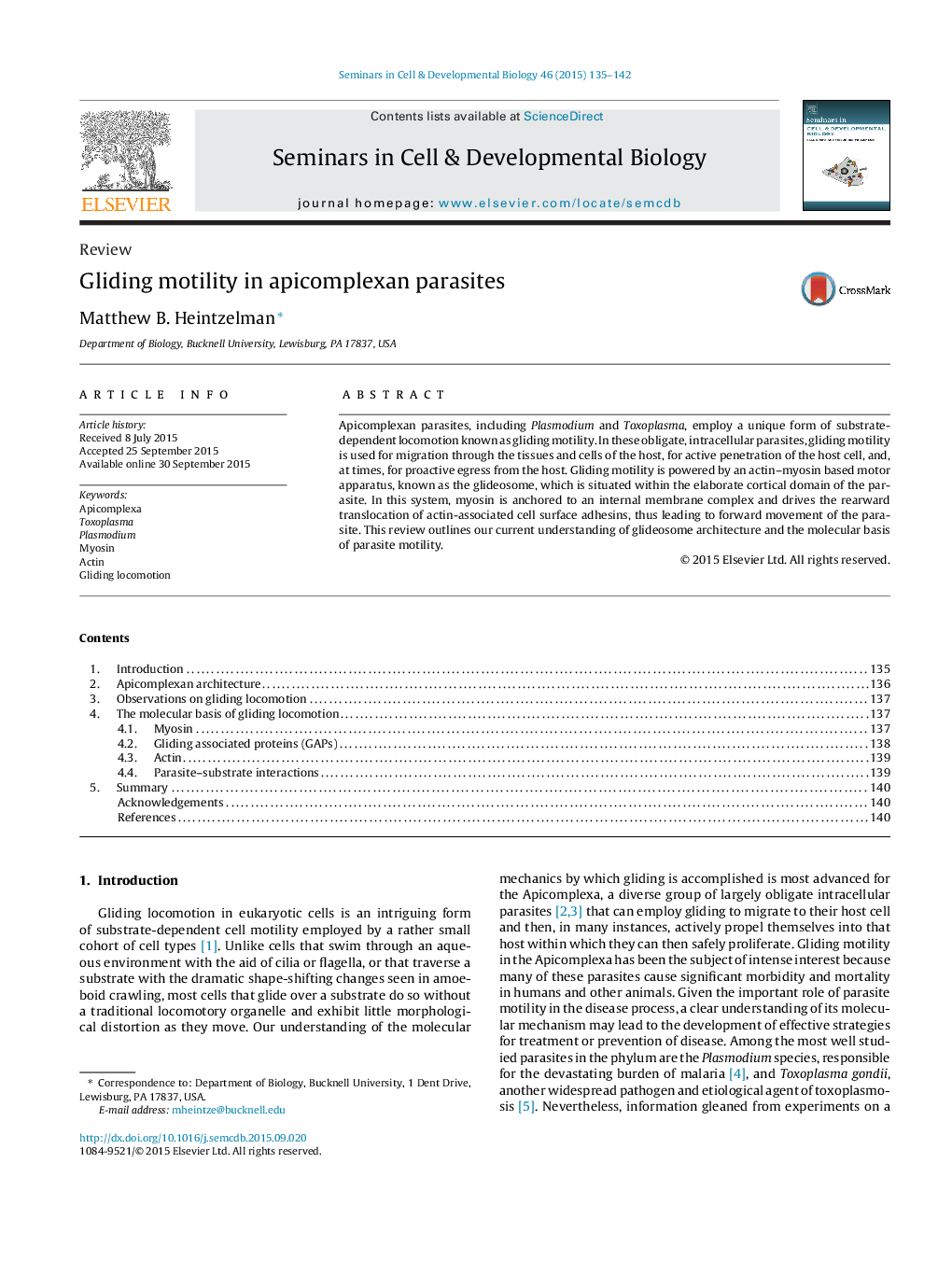| Article ID | Journal | Published Year | Pages | File Type |
|---|---|---|---|---|
| 2202549 | Seminars in Cell & Developmental Biology | 2015 | 8 Pages |
Apicomplexan parasites, including Plasmodium and Toxoplasma, employ a unique form of substrate-dependent locomotion known as gliding motility. In these obligate, intracellular parasites, gliding motility is used for migration through the tissues and cells of the host, for active penetration of the host cell, and, at times, for proactive egress from the host. Gliding motility is powered by an actin–myosin based motor apparatus, known as the glideosome, which is situated within the elaborate cortical domain of the parasite. In this system, myosin is anchored to an internal membrane complex and drives the rearward translocation of actin-associated cell surface adhesins, thus leading to forward movement of the parasite. This review outlines our current understanding of glideosome architecture and the molecular basis of parasite motility.
